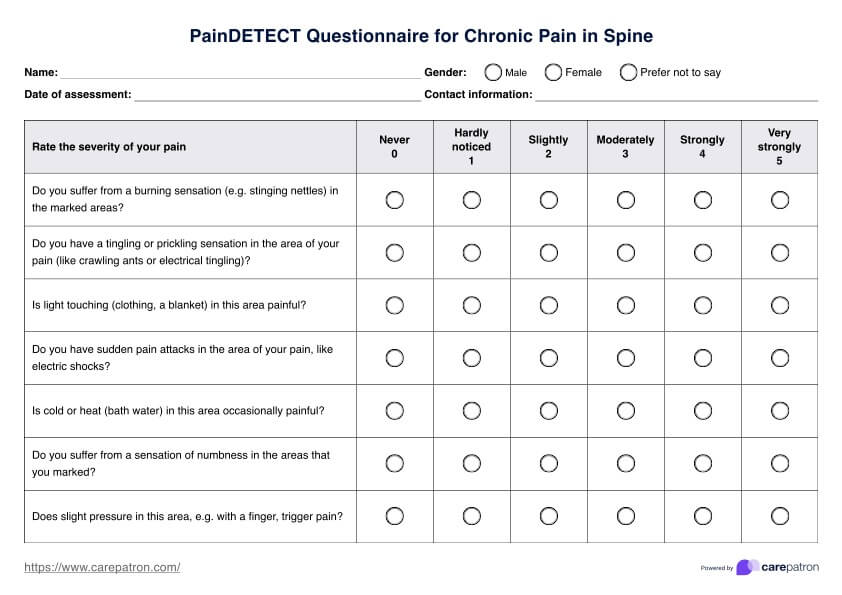PainDETECT is a self-administered screening questionnaire used to assess the likelihood of neuropathic pain components in patients with chronic pain conditions like low back pain, osteoarthritis, and rheumatoid arthritis. It consists of 9 items that evaluate the quality, severity, course, and radiating nature of the patient's pain.

PainDETECT Questionnaire for Chronic Pain in Spine
Download a PDF copy of the PainDETECT Questionnaire for Chronic Pain in Spine to assess neuropathic-like symptoms.
PainDETECT Questionnaire for Chronic Pain in Spine Template
Commonly asked questions
The PainDETECT scoring ranges from -1 to 38. A score of ≤12 suggests neuropathic pain is unlikely, a score of 13-18 indicates an unclear neuropathic component and a score of ≥19 suggests a probable neuropathic pain component.
Yes, it is possible to live with chronic nerve pain, though it can significantly impact quality of life. Chronic neuropathic pain is often difficult to manage and may require a multidisciplinary approach involving medications, physical therapy, psychological interventions, and other treatments tailored to the individual patient.
EHR and practice management software
Get started for free
*No credit card required
Free
$0/usd
Unlimited clients
Telehealth
1GB of storage
Client portal text
Automated billing and online payments











